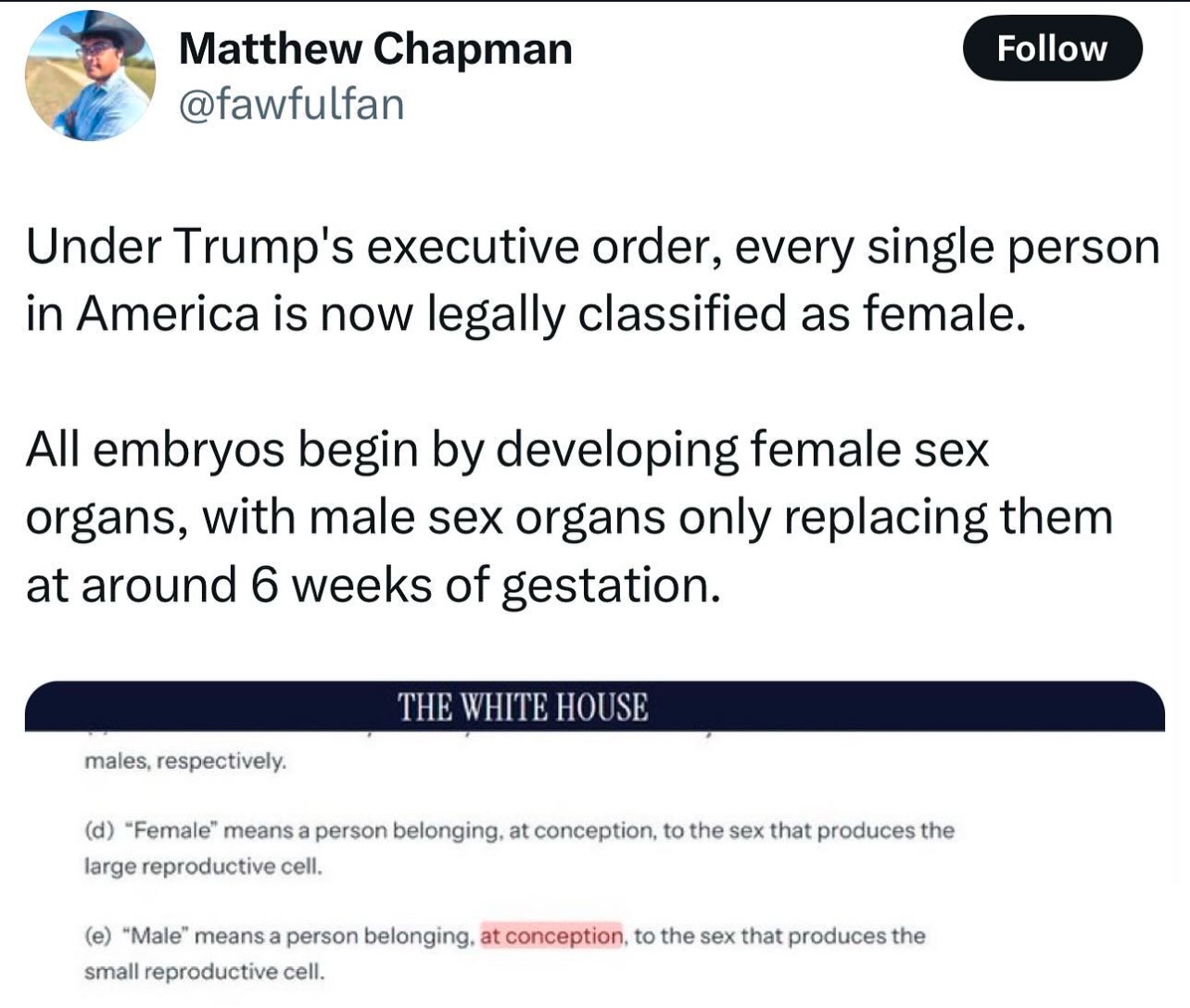this post was submitted on 21 Jan 2025
1579 points (97.8% liked)
Political Memes
5849 readers
2211 users here now
Welcome to politcal memes!
These are our rules:
Be civil
Jokes are okay, but don’t intentionally harass or disturb any member of our community. Sexism, racism and bigotry are not allowed. Good faith argumentation only. No posts discouraging people to vote or shaming people for voting.
No misinformation
Don’t post any intentional misinformation. When asked by mods, provide sources for any claims you make.
Posts should be memes
Random pictures do not qualify as memes. Relevance to politics is required.
No bots, spam or self-promotion
Follow instance rules, ask for your bot to be allowed on this community.
founded 2 years ago
MODERATORS
you are viewing a single comment's thread
view the rest of the comments
view the rest of the comments

Will they start by playing every previous Male 30% less?
The wage gap as you're thinking of it doesn't exist. Women aren't paid 30% less than men, all else being equal. The wage gap number comes from comparing the median total earnings of men working full time to the median total earnings of women working full time. That's it. It doesn't compare apples to apples, and any time you adjust to be closer to comparing apples to apples the gap shrinks. Just switching from total earnings to hourly wage eliminates a big chunk of it as most jobs are paid time and a half for overtime and a majority of overtime is worked by men. Differences in things like industry, position, tenure, career interruptions, etc all also play into it. To the point that young, childless, urban, college educated women actually earn more than young, childless, urban, college educated men.
It wasnt meant to be that serious.
And no, the gender pay gap does exist, its calculated within each sector and the difference in Part-Time to full-time work is Accounted for: https://ec.europa.eu/eurostat/statistics-explained/index.php?title=Gender_pay_gap_statistics
Although its "only" 12% in reality
Since you'd gone with 30%, I was assuming you'd exaggerated the US pay gap rather than the EU one. Until I hit your link I was ready to pull out an old DoL report that did a multivariate analysis and ended up with a remaining unexplained gap small enough that it was within margin of error.
Doing some brief reading on the EU numbers from the link you provided I notice a demonstration of one of the things I was getting at - the EU number is much smaller than the US number because the EU number is hourly rather than total and thus mitigates differences in hours worked (since it is average gross hourly earnings it doesn't fully account for overtime, as overtime is typically paid at a higher rate) right out of the gate.
Another thing it notes that is worth pointing out is that the gap is smaller for young employees, which the link suggests could be due to career interruptions being longer and more frequent for women. The DoL report I mentioned earlier notes this as well for the US, and noted it as a pretty major factor - basically the longer and more frequent career interruptions for women on average lead to missed opportunities and small but lasting and cumulative damage to future earnings. Probably the biggest and most straightforward move to adjust this in favor of women would of all things be to expand parental leave for fathers in such a way that men are incentivized to make full use of it, which would significantly reduce the gap in number and length of career interruptions.
An article linked off that page suggests about 20% of the EU wage gap (~3% of the ~14% gap from the year the analysis was done) can be explained by factors they consider in their analysis, which is less thorough than the old DoL one as far as confounding factors and which they admit doesn't include all explanatory factors because the data needed simply isn't available. It's also all over the place when looking at individual EU countries as opposed to the EU average, which suggests that differences in culture and law between various EU countries probably plays a much bigger role than anything else.
Which brings me back to the whole "wage gap don't real" thing - women are not being paid dramatically less than men for doing the same work just because they are women, all else being equal. In no small part because all else isn't equal, and the more you try to account for that, the smaller the gap becomes (except apparently in Luxembourg and Romania, where it goes radically the other direction).
Yeah, Sure, there are various varying cultural differences within the EU, but i for one Like that Part, because, it makes those comparisons more fascinating. Even through the Gap is smaller in Younger employees, the majority still experiences it, as ~60% of our workforce is from the boomer Generation. So as for the individual it won't mean as much, its still a factor for the populace at large and society as a whole.
Can you send me the Link to the DoL Report? I am not as well-versed on inner-US statistics, so i would Like to ready and Analyse it 😊 On aside Note to the cultural differences, the US should also have this with its hispanic, indigenous and asian populations aside the european-american one. Is there any Analysis on the gender-pay Gap in that regards?